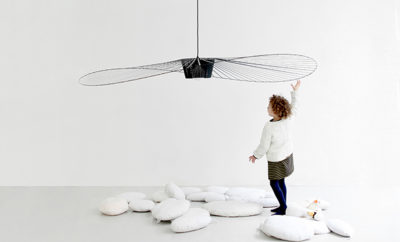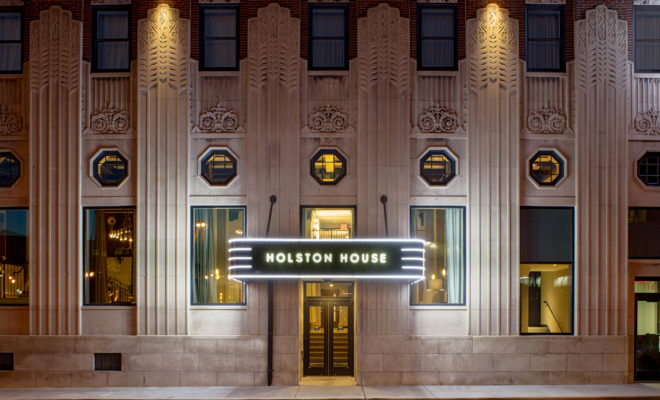 COURTESY HOLSTON HOUSE
COURTESY HOLSTON HOUSE
Design
Modern Design Meets Country in Nashville’s New Holston House
Utter “Nashville” and most people within earshot will instantly envision honkytonks and cowboy boots. But the Nashville of today is much more than this: It’s one of the fastest growing cities in the U.S., and as a result, a lure for new business and culture, a bona-fide foodie paradise, and still the hub for 24/7 live music—and not just of the country variety. With its plethora of entertainment, eateries, and Vegas-like vibes, Nashville has become a particularly popular destination for bachelor and bachelorette parties in recent years. And with this surge in visitors, the local hospitality properties are stepping it up in design and amenities. Case in point is the recently opened Holston House.
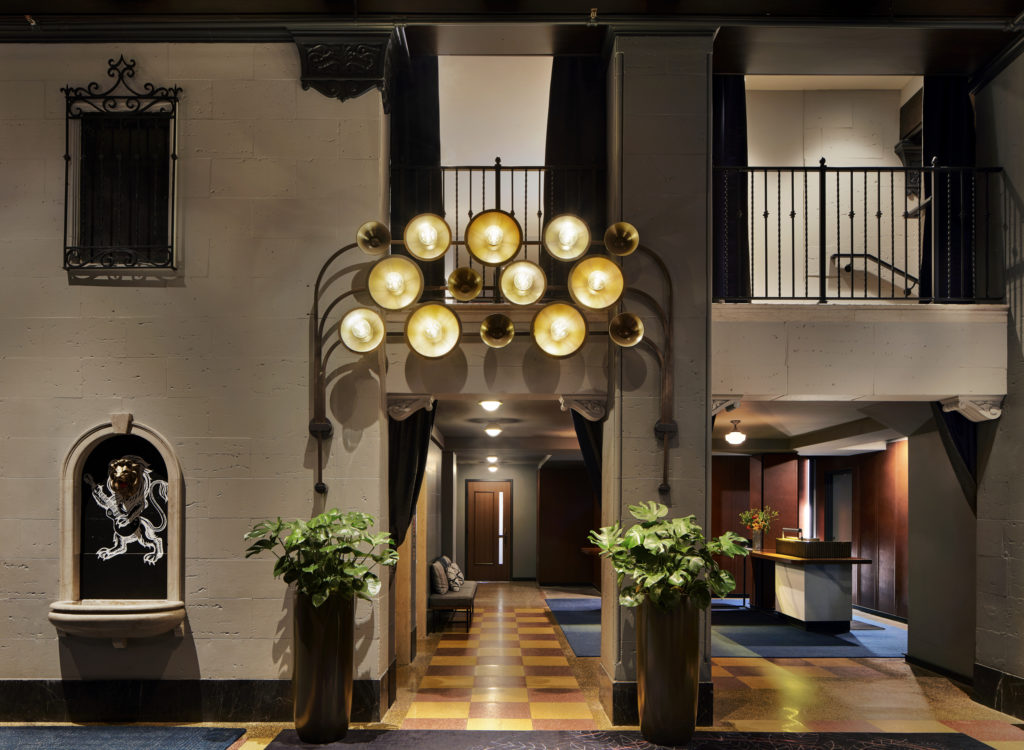
Courtesy David Mitchell
You can say that this boutique hotel has come full circle: it occupies a historic 1920s building that originally opened as the James Robertson Hotel, then became an apartment building, and thereafter affordable housing. By the time Holston House developer HRI Properties took ownership, the downtown structure was falling into disrepair, but its landmark status posed challenges to any gut renovation. That’s when HRI tapped Stonehill Taylor to take the building from shabby to chic, all the while navigating the rough waters of working with a landmark.
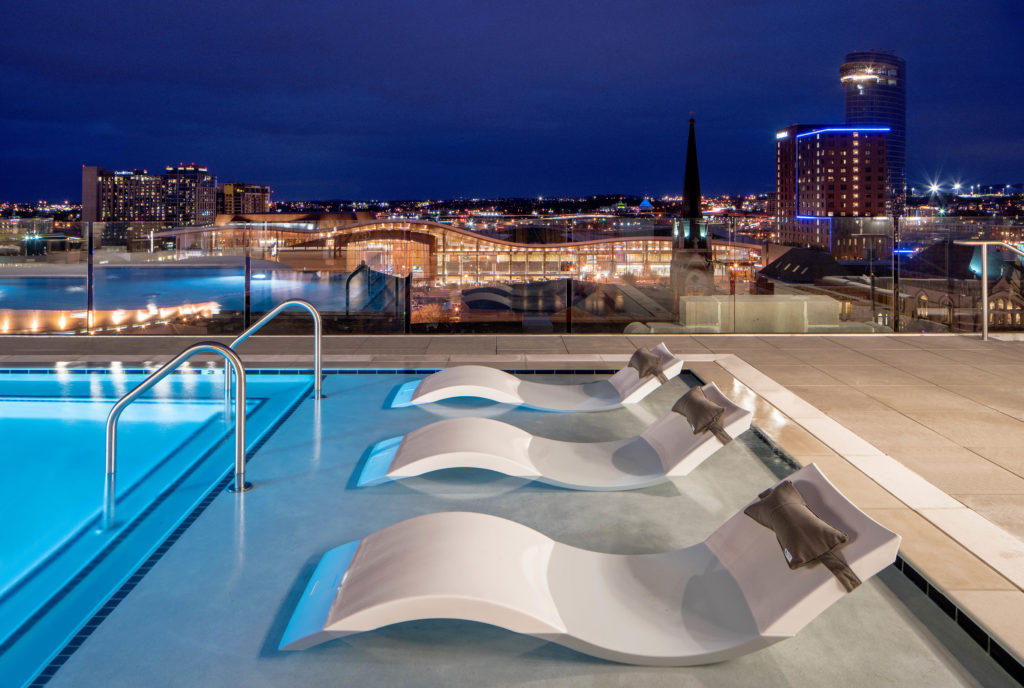
Courtesy Holston House
The redesign alludes to Nashville but avoids any blatant kitsch. “We’ve woven references to Nashville’s music and cultural history throughout in the selection of materials and design of the furnishings,” explains Stonehill Taylor principal Michael Suomi. Just beyond the restored art deco facade, bespoke modern touches mingle seamlessly with restored existing elements in the landmarked lobby. For instance, original exposed beams at the ceiling meet Stonehill Taylor–designed brass chandeliers, and structural columns sport complementary custom sconces, all in a coherent fashion. When the designers learned that the unattractive checkerboard-terrazzo floor was also a protected detail, they elevated it by laying down refined and saturated area rugs that anchor clusters of plush seating.
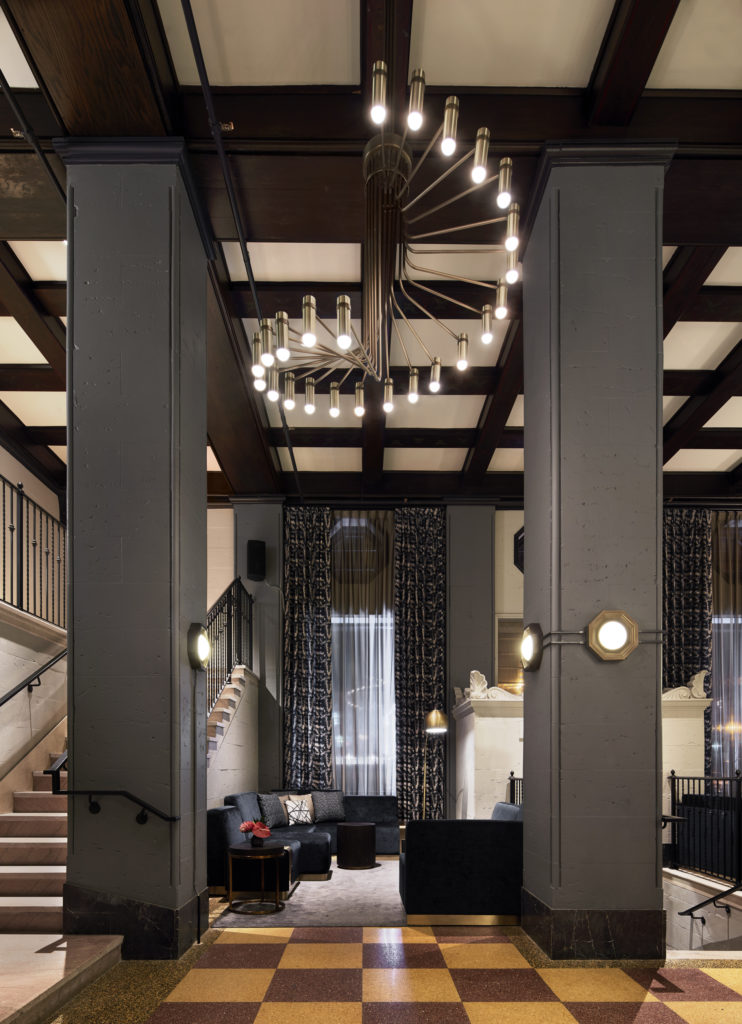
Courtesy David Mitchell
A composition of mismatched audio speakers—a nod to Phil Spector’s “Wall of Sound”—is just one of many pieces in the hotel’s art program (developed by Eaton Fine Art), drawing the eye up to a mezzanine overlooking the lobby. On this level, Bar Tenn boasts a stunning original rosette-coffered ceiling and whimsical cocktail tables made with repurposed radiators. Back on the lobby floor, bespoke luminaires that evoke vintage phonographs form a proscenium-like arch that leads to the informal check-in desks. The leather wall panels behind check-in, meanwhile, very quietly reference cowboy boots.
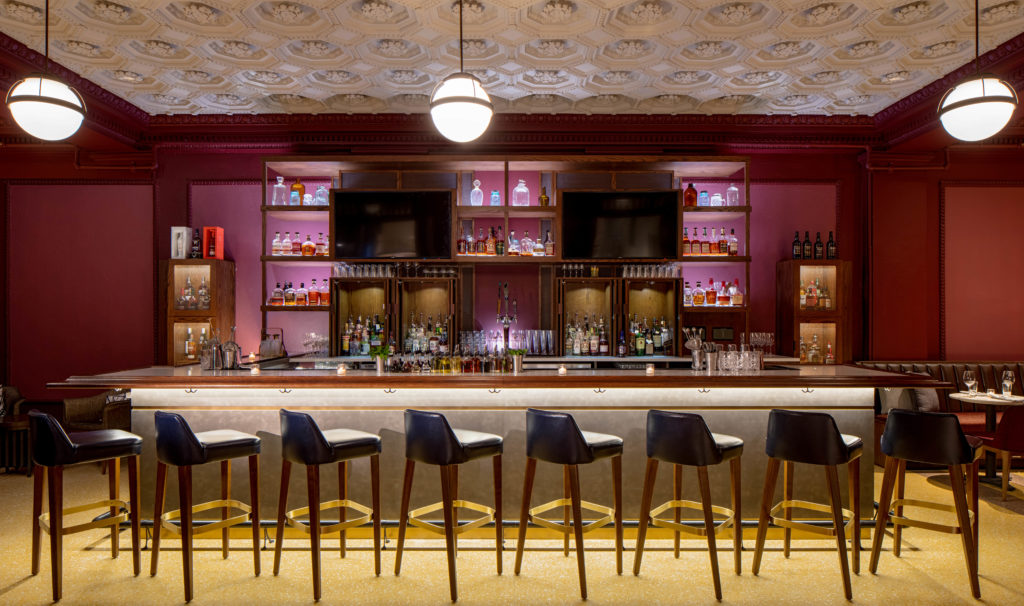
Courtesy Holston House
When conceptualizing the 191 guest rooms, the designers considered the throngs of bachelor and bachelorette groups, ultimately developing unique floor plans and a sophisticated palette to cater to this clientele. Foregoing conventional closets, Stonehill Taylor custom designed open valet-like wardrobes that help maximize space and, with their black steel and wood construction, hint of Tennessee’s industrial past. Leather headboards, floor-to-ceiling brocade drapery, and bronze-hued ceilings in the bathrooms impart a luxurious feel. The bathrooms’ oak barn doors, another space-saving measure, open onto generous showers and vanities but not the toilet: By separating the water closet from the main bathroom, the floor plans enable friends to utilize these areas simultaneously as they prepare for a night on the town.
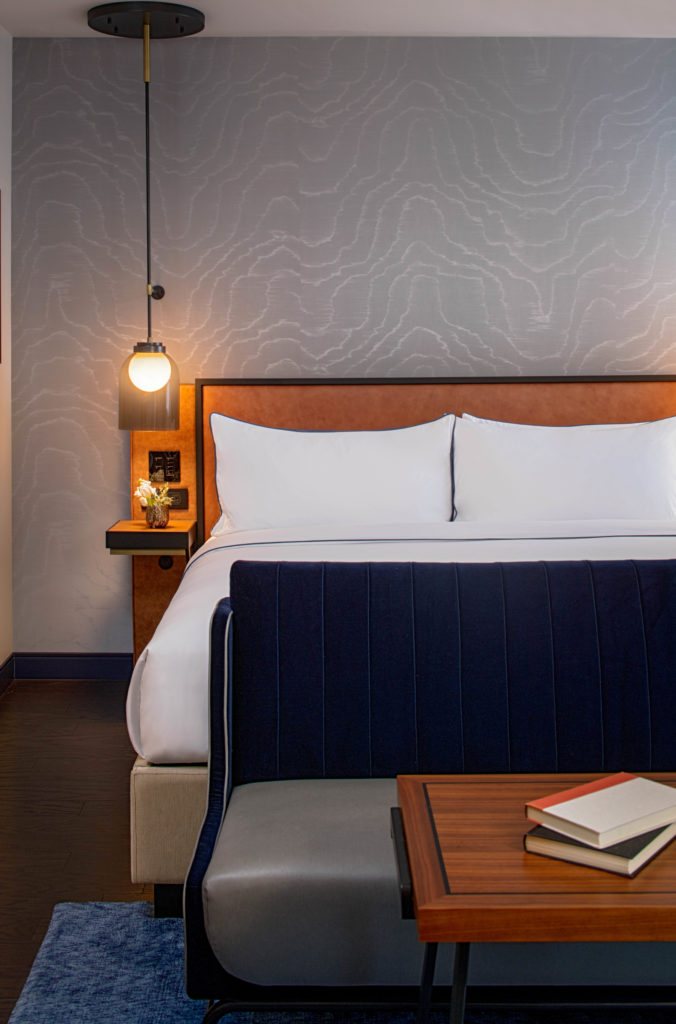
Courtesy Holston House
Should guests tire of the honkytonks and street cacophony, they can retreat to the hotel’s rooftop bar to sip drinks, lounge on reclining daybeds, or wade the shallow pool under the stars. The roof deck’s biggest appeal, however, is its commanding views: From way up here, one can spot all the new construction in this rapidly growing cityscape right alongside the legendary music venues along Broadway that originally established Nashville as “Music City.”

Courtesy Holston House



